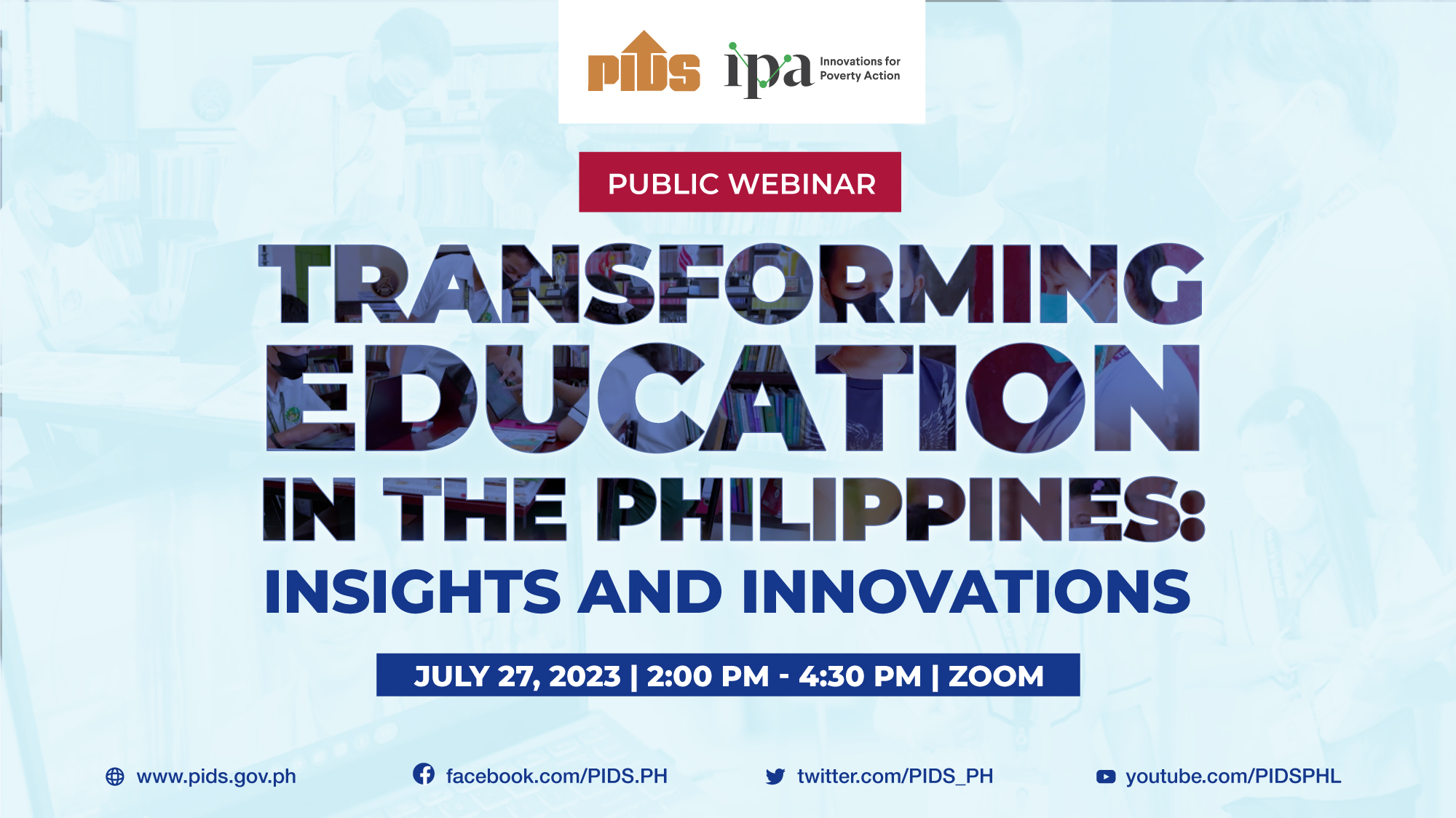Unlike their parents before them, poor Filipino children are not necessarily doomed to suffer the indignity of poverty, according to experts from the Asian Development Bank (ADB).
In an Asian Development Blog, ADB Economic Research and Regional Cooperation Department Statistician Arturo Martinez, and Consultants Katrina G. Miradora and Jan Arvin Lapuz said quality education is the key to their economic and financial success.
“Better intergenerational mobility [or the process of moving up and down the socioeconomic ladder across generations] prospects in education may not necessarily be a predetermined outcome for economies that are moving into a higher income group. To ensure that family background does not become a binding constraint, economic growth should be complemented by policies that promote greater access to high quality education for all—especially for those who do not come from a privileged family background,” the authors said.
The blog authors said that in 22 economies across the Asia Pacific, around 27 percent to as much as 46 percent of children whose parents were from the bottom half or the “education-poor” group managed to reach the top quartile.
However, a large portion of children, around 54 percent to 73 percent whose parents are from the bottom half remained in bottom half.
The data also showed that about 35 percent to 57 percent of children whose parents’ educational attainment belong to the upper 25 percent or the “education-rich” group have stayed in the same quartile as their parents, while 15 percent to 43 percent of them have fallen to the bottom half.
“Our findings underscore that parental characteristics are not the sole determining factor of one’s future mobility prospects. In Asia and the Pacific, there is evidence of intergenerational mobility in education, with richer economies showing generally higher levels of mobility,” the authors said.
“Interestingly, the chances of children with ‘education-poor’ parents to climb the education ladder are not so different among economies with low and high overall mobility,” they added.
In terms of gender, the authors said the results were mixed. But in economies where the overall average mobility is low, females are also less mobile than their male counterparts.
The authors said a lower median level of intergenerational mobility is observed among men, consistent with the reversal of gender inequality in education that started in 1970s.
However, cross-country variation is higher among women, and females from more than half of the sampled economies have lower mobility.
“National wealth may have played a big role in this trend. There is evidence suggesting that richer economies tend to have higher levels of intergenerational mobility in education due to their greater capacity to invest in education,” the authors also said.
In a 2014 study titled “Growth and Redistribution: Is there Trickle Down Effect in the Philippines?” Philippine Institute for Development Studies (PIDS) Supervising Research Specialist Danileen Kristel C. Parel said earning a high-school diploma and a college degree are key factors in preventing Filipinos from entering poverty or experiencing intergenerational poverty in both rural and urban areas.
Parel said obtaining a secondary education reduces the probability of a person to experience chronic poverty in rural and urban areas. She added that tertiary education, on the other hand, has a more encompassing impact as it decreases the probability of experiencing chronic poverty and becoming poor in both urban and rural areas.
Data showed that secondary increases the probability of escaping poverty by 70 percent relative to being chronically poor, compared to only 20 percent in urban areas.
Parel said this means the impact of secondary education on transient poverty is more pronounced in rural than urban areas. It also decreases the likelihood of entering into poverty in rural areas, while it is not significant in urban areas.
Tertiary level education, meanwhile, increases the probability of escaping poverty relative to being chronically poor by 272 percent in rural areas and 720 percent in urban areas.
Parel said this means the impact of tertiary education is more significant in urban than in rural areas.












